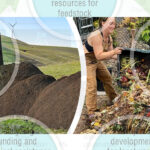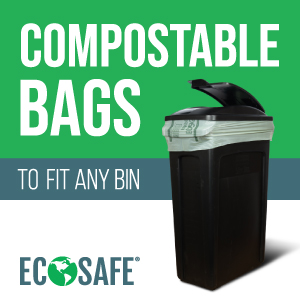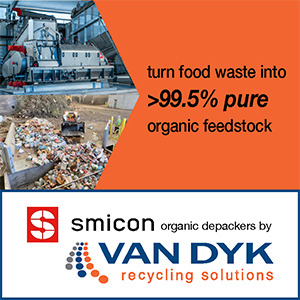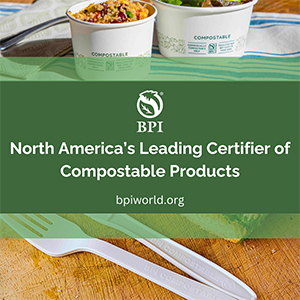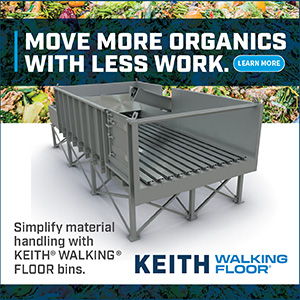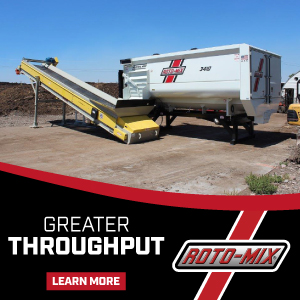Top: To mitigate contamination, a clear enforcement process is critical to guide and correct behavior. Photos courtesy of Amplify for Change
Mimi Shah and Betsy Lipson
Composting programs have expanded dramatically in the United States. In 2005, only a handful of communities offered services. By 2023, BioCycle identified approximately 400 curbside and drop-off food scraps collection programs encompassing 710 communities nationwide. This rapid growth is a positive step toward diverting food scraps from landfills, reducing greenhouse gas emissions, and creating valuable compost. However, as programs scale, they face the dual challenge of increasing participation while keeping contamination in check.
At Amplify for Change, we have worked with and studied dozens of food scraps collection programs nationwide. We’ve learned that success depends on three interconnected dimensions: program type, design and policy, and outreach and education — all of which most directly affect contamination levels and participation rates. Whether you are launching a new program or looking to tweak an existing one to reduce contamination, our observations provide a framework for analysis and action.
Program Type
Municipal curbside food scraps programs generally fall into three categories:
- Mandatory Collection: All residents must participate, and noncompliance can result in penalties.
- Standard Offering Collection: All residents receive a cart, but participation is voluntary.
- Voluntary Collection: Only residents who opt in receive a cart and participate.
A mandatory program helps ensure a large volume of food scraps is collected, which can justify the costs associated with running such a program. However, municipalities run the risk of increased contamination with mandatory programs, as some residents may participate reluctantly and without care. Following through on a clear enforcement process is critical to guide and correct behavior. An example of a mandatory program is in Seattle, Washington. Residents (as well as the commercial and institutional sectors) are mandated to participate, resulting in large-scale food waste diversion. However, the City of Seattle must manage contamination through strong enforcement and education.
A standard offering program gives households access to a cart but does not guarantee participation since it’s voluntary. This model can struggle with cost-effectiveness if participation remains low. Additionally, residents might misuse organics carts for overflow trash, particularly in communities that use Pay-As-You-Throw (PAYT) pricing systems, with higher costs for larger trash carts. With this program type, a sustained commitment to outreach and education over time is important. Arlington, Virginia operates a standard offering program in which single-family residents’ yard trimmings carts can also be used for food scraps. Participation, which has plateaued at about 20%, is more of a challenge than contamination.
Voluntary programs, while delivering the lowest contamination rates due to self-selection by motivated participants, face the challenge of achieving enough volume to support cost-effective collection. Municipalities must carefully plan routing and collection logistics to make voluntary programs environmentally and financially feasible. Keeping outreach fresh looking and continually nurturing word-of-mouth promotion helps to sustain the participation rate. Minneapolis, Minnesota operates a voluntary program with over 50% participation and low contamination, demonstrating the power of persistent outreach.
Choosing a program type is a strategic decision that directly shapes participation and contamination. Municipalities need to carefully consider their goals, community values, and resource capacity before choosing a program type. Figure 1 summarizes the pros and cons of each approach.
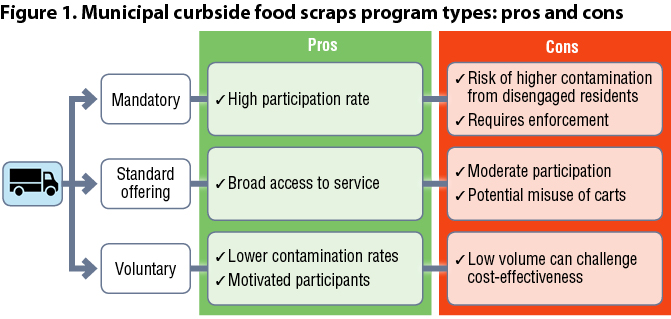
Courtesy Amplify for Change
Program Design & Policy: Building Blocks for Success
A strong program includes elements that transform it from a basic service to a sustainable, community-supported system. Successful food scraps collection programs of any type usually include these design and policy elements:
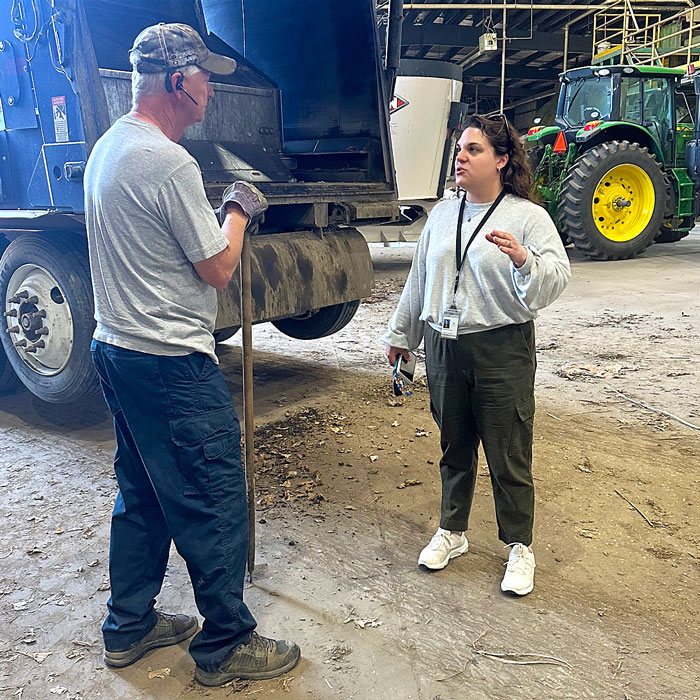
A strong municipality/hauler partnership helps with consistent service delivery and quick response to issues.
Committed Leadership: Elected officials, senior managers, and waste staff can help set the tone for community buy-in. By visibly championing the program, securing resources, and consistently and frequently communicating the program’s value and benefits, the community gradually comes to recognize and appreciate the program. Committed leadership can also help enforce process and policy. For example, Hutchinson, Minnesota has a two strikes program where the resident’s cart is removed from the home on the second infraction. Because leadership actively supports enforcement efforts, the organics collection staff feel empowered to implement and uphold the policy effectively.
Policy Ordinances: Well-designed composting policies, supported by education and enforcement, can rapidly shift public norms and reduce the tonnage of landfilled organics. In 2021, primarily as a cost-saving measure, Hamilton, Massachusetts adopted a ban on organic material in the trash stream. For trash carts to be picked up, residents must also put out their organics cart. Another example of an effort to accelerate behavior change is the Minnesota Pollution Control Agency (MPCA)’s policy for the 7-county metro region around Minneapolis-St. Paul, which sets forth a comprehensive strategy to decrease overall waste generation by 15% over the next two decades. A central component of this plan is the requirement for cities with populations exceeding 5,000 to provide curbside organics recycling services by 2030. Finally, California’s residential organics policy, enacted through Senate Bill 1383 (SB 1383), is often cited as a leading example of comprehensive climate legislation targeting organic waste. While the policy has faced implementation challenges, it has also achieved notable successes and offers valuable insights for other jurisdictions.
Streamlined Collection Processes: Processes that are easy for residents and municipalities alike are associated with more success. Municipalities with existing yard trimmings programs are generally better positioned to expand into food waste collection in a cost-effective and successful way. For example, when Arlington County, Virginia, extended its longstanding yard trimmings collection program to include food scraps, it was able to promote the change as an added benefit to current services. The expansion required little additional cost and no new cart — features that residents appreciated.
Other elements common to successful programs include:
- Providing Compostable Bags: Supplying or helping residents access the correct type of certified compostable bags (and kitchen counter bins) reduces the “friction” associated with collecting food scraps, especially for residents new to this behavior.
- Clear Enforcement and Incentives: Transparent rules, paired with either nudges or penalties, encourage desired practices. Communities that offer reduced waste fees, rebates, or reward programs for proper composting often see higher engagement.
- Strong Municipality-Hauler Partnerships: Collaboration between haulers and municipalities helps with consistent service delivery, quick response to issues, and adjustments that reflect program learnings.
- Effective Cost Structures: A clear, fair, and transparent fee structure helps build residents’ trust and maintains program financial viability over the long term.
Remember, contamination often results from something as simple as visually confusing cart designs. When carts for waste, recycling, and organics are the same size and shape, for example, residents can easily make mistakes. Imagine going to throw away your trash at night in the snow or rain and seeing three bins that all look the same! Different colored lids on carts of the same size and shape only go so far to reduce contamination.
Lastly, if a municipality is able to take on the hauling, that may be an effective way to run a food scraps collection process. The municipality will have more control of the collection with the ability to manage operations and policies. There is greater flexibility if the municipality runs collection as it is easier to implement pilot programs, track contamination, adjust routes and respond to events.
Program success requires more than choosing a program type. It demands implementing thoughtful program design and policy — and communications that help the community take notice.
Continuous Outreach and Education
Often, as programs mature, municipalities want to increase participation, reduce contamination, or usually, do both of these at the same time. To accomplish this, outreach and education efforts become increasingly vital. Through Amplify for Change’s work, we have observed that while program type, design and policy set the stage for success, it is the strategic layering of outreach and education, consistent municipal investment, and, often, the passage of time that ultimately drives strong program outcomes. There should always be a baseline budget to support ongoing outreach and education.
Community outreach and education typically falls into four levels (Figure 2), or tiers, based on level of effort and investment. Basic efforts like a website and mailers (Tier 1) generally yield limited results, while comprehensive, sustained campaigns (Tier 4) are characteristic of programs that maintain consistently manageable contamination and high participation rates.
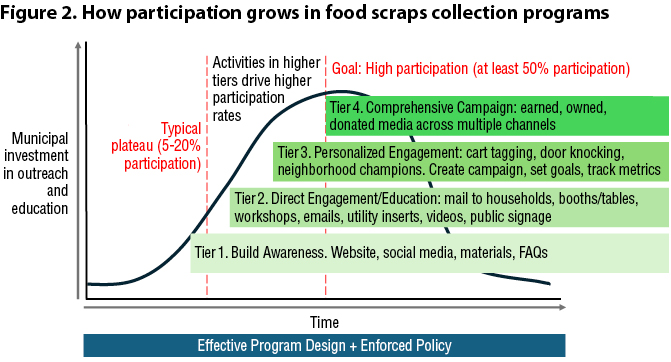
Courtesy Amplify for Change
Participation grows when there is a deliberate and comprehensive outreach strategy (i.e., the inclusion of all four tiers in Figure 2) to raise awareness and educate the public. Program success is a marathon, not a sprint — and fortunately, there are many communities to learn from along the way.
Building Behavior Change, Not Just a Program
Food scraps collection programs are fundamentally about changing behavior — asking residents to adopt new daily habits. Program success depends on intentional program design, implementing good policies, leadership support, continuous outreach and education that adjusts with data and observations, and, in many cases, patience. Municipalities that invest thoughtfully in all of these areas create the conditions for lasting behavior change and, in doing so, build programs that deliver environmental and financial impact — and community pride.
Part II of this article series explores how targeted outreach and engagement strategies can advance the success of your program even further.
Betsy Lipson and Mimi Shah, principals at Amplify for Change (Amplify), bring over 25 years of experience designing, leading and evaluating outreach campaigns, including ones that support solid waste and recycling goals, through practical, community-centered strategies. Amplify has worked with local governments across the country to increase participation in food scraps collection and reduce contamination in organics programs — whether through short-term pilots or full-scale citywide rollouts. Research tools like surveys and focus groups are used to tailor messaging and outreach approaches for a variety of audiences that work for real-world municipal settings. By helping cities and counties improve collection quality and build long-term engagement, Amplify’s work supports the operational and policy goals of public works and solid waste departments alike.



